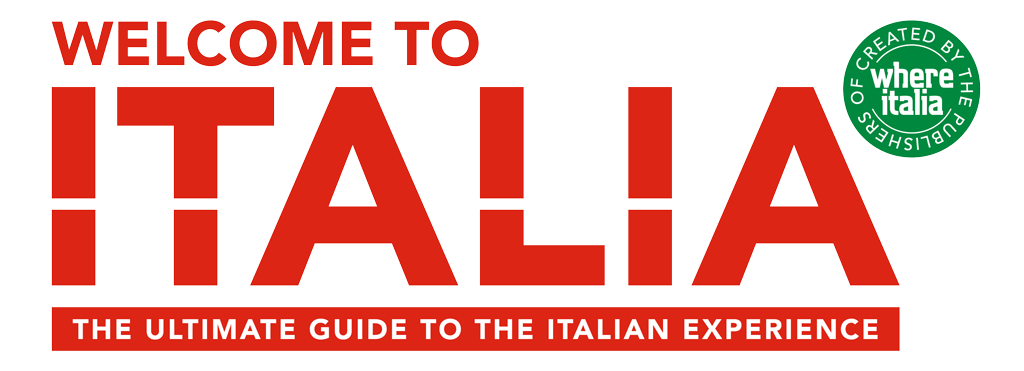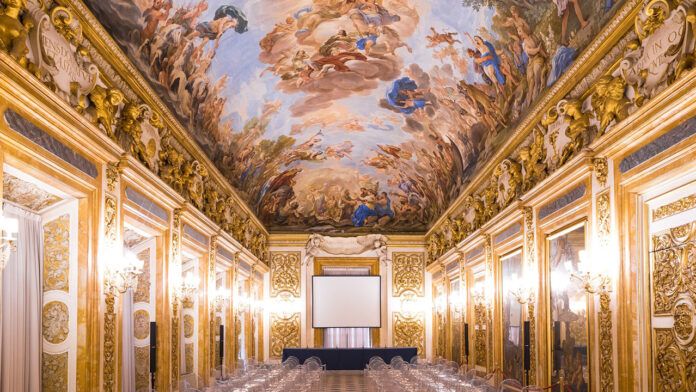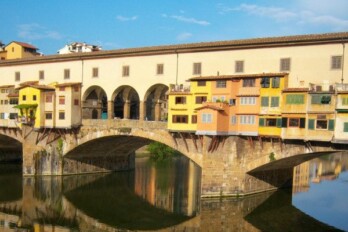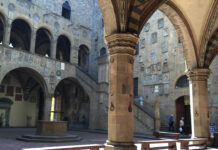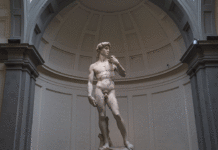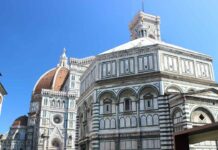They are the family responsible for the birth of the Florentine Renaissance. Bankers and skilled politicians, they placed their wealth and power at the service of patronage and art, leaving their traces all over the city. Indeed, today it is still impossible to walk around Florence without coming upon vestiges of their presence.
The Medici were an ancient Florentine family, protagonists of central importance in the history of Italy and Europe between the 15th and 18th centuries. Wherever you go in Florence, in some way or other you will come upon the (imposing!) traces left by them over the centuries. But who exactly were these famous Medici, which monuments in the city were erected by them, in which buildings did they live, of which artists were they patrons and clients?
They were great patrons of the arts and letters, above all Cosimo and his grandson Lorenzo the Magnificent, and it was precisely thanks to their constant contribution that Florence became the driving force of the Renaissance. No less than three pontiffs, Leo X, Clement VII and Leo XI, were all Medici, as were two queens of France, Catherine and Marie. With the exception of a few short interruptions, the Medicis’ power lasted from 1434, with the rule of Cosimo the Elder, to 1737, with the death of Gian Gastone, the last Grand Duke. Gian Gastone’s sister, Anna Maria Luisa de’ Medici, known as the “Electress Palatine”, the last of the grand-ducal branch, entered into a Family Pact with the Habsburg-Lorraines, leaving the Medicis’ huge artistic patrimony as a legacy to the city of Florence.
The official dwellings. Their first Florentine residence was what is now known as the Palazzo Medici Riccardi. It was here that Cosimo the Elder and Lorenzo the Magnificent lived and artists such as Donatello, Michelangelo, Paolo Uccello, Benozzo Gozzoli and Botticelli worked. Frescoed by Benozzo Gozzoli, a student of Beato Angelico, the Magi Chapel, located on the main floor, is the true jewel of the building. Due to its reduced dimensions, entry to the chapel is limited to groups of a maximum 15 persons at a time.
In 1540 Cosimo I moved to Palazzo Vecchio, a fourteenth-century building. In 1555 the restructuring work on the building was entrusted to the most famous architect and painter of the time, Giorgio Vasari. He was also commissioned to restore the imposing Salone dei Cinquecento (Hall of the Five Hundred), built in 1494 to serve as the seat of the Great Council.
From Palazzo Vecchio, a short walk along the Arno, crossing the very famous Ponte Vecchio, takes you to the zone of Oltrarno (literally beyond the River Arno), to the third and final residence of the Medici family: Palazzo Pitti. Situated in the square of the same name, it was built by the Pitti family in the 15th century. Today it houses the Treasury of the Grand Dukes, the Palatine Gallery and Royal and Imperial Apartments, the Gallery of Modern Art and the Museum of Costume and Fashion, all visitable with a single cumulative ticket.
Cosimo I was also responsible for the creation of the Boboli Gardens, situated at the rear of the building. Garden and Palazzo developed over the three centuries that followed into a close dialogue between art and nature, which led to Boboli becoming the model of an Italian-style garden used for the palaces of Europe. It is possible to gain entry to the Boboli Gardens with a single ticket, which also includes entry to the Gardens of Villa Bardini.
Numerous Florentine religious buildings are obviously indissolubly linked with the history of the Medici family. First and foremost the Basilica of San Lorenzo. Today the Medici Chapels are a state museum that is open to the public, which is accessed via the rear of the basilica. Another building associated with the family is the Cathedral of Santa Maria del Fiore, the Duomo of Florence. It was Cosimo the Elder who commissioned Filippo Brunelleschi to build the dome of the Cathedral, which was to be frescoed years later for his descendant, Grand Duke Cosimo I, who personally chose the theme of the Universal Judgement, partly created by Giorgio Vasari.
The Uffizi Gallery is among the most visited museum complexes in the world: here you will find is the most conspicuous collection in existence of works by Raphael and Botticelli, as well as by Giotto, Titian, Caravaggio, Dürer, Rubens and many others. The construction work on what are now the Uffizi Galleries was entrusted to Giorgio Vasari, who was already running the construction site of the adjacent Palazzo Vecchio. In 1565, the Duke also entrusted to Vasari the construction of a sort of secret raised passageway that connected up Palazzo Vecchio and Palazzo Pitti, the new residence of the Medici dynasty. This is the so-called Vasari Corridor, which goes through the Uffizi Gallery, runs alongside the Arno to the Ponte Vecchio, to then continue on the other bank of the river, and, after approximately one kilometre, reach its two exits, one in the Boboli Gardens and the other in Palazzo Pitti. Unfortunately, the Corridor is currently closed to the public for restructuring work, except for events or private visits.
Our itinerary in the Florence of the Medici finishes in Piazza Santissima Annunziata, which is dominated by the equestrian monument of Ferdinando de’ Medici, son of Cosimo I. A late work by Giambologna, completed by one of his pupils after his death, it represents the realisation of the Grand Duke’s dream of being remembered for his exploits.
Although listing them all would be impossible, spread out around the city there are literally hundreds of other remnants of the Medici family that merit a visit, such as the beautiful Palazzo Ramirez de Montalvo, in Borgo degli Albizi, where Antonio Ramirez de Montalvo, the cupbearer of Cosimo I, lived (the cupbearer had the important task of serving drinks, ensuring that they had not been poisoned) and is distinguished for the precious decoration of its façade.
Although, in the light of what we have said, the entire city can be considered an open-air museum to the Medici, the Medici Museum, the first exhibition venue entirely devoted to the history of the family, has recently been inaugurated inside the sixteenth-century Palazzo di Sforza Almeni. The museum combines real and virtual elements and tells the story of the family through themed rooms, temporary exhibitions, events, a specialist bookshop, meetings, book presentations and lectures.





